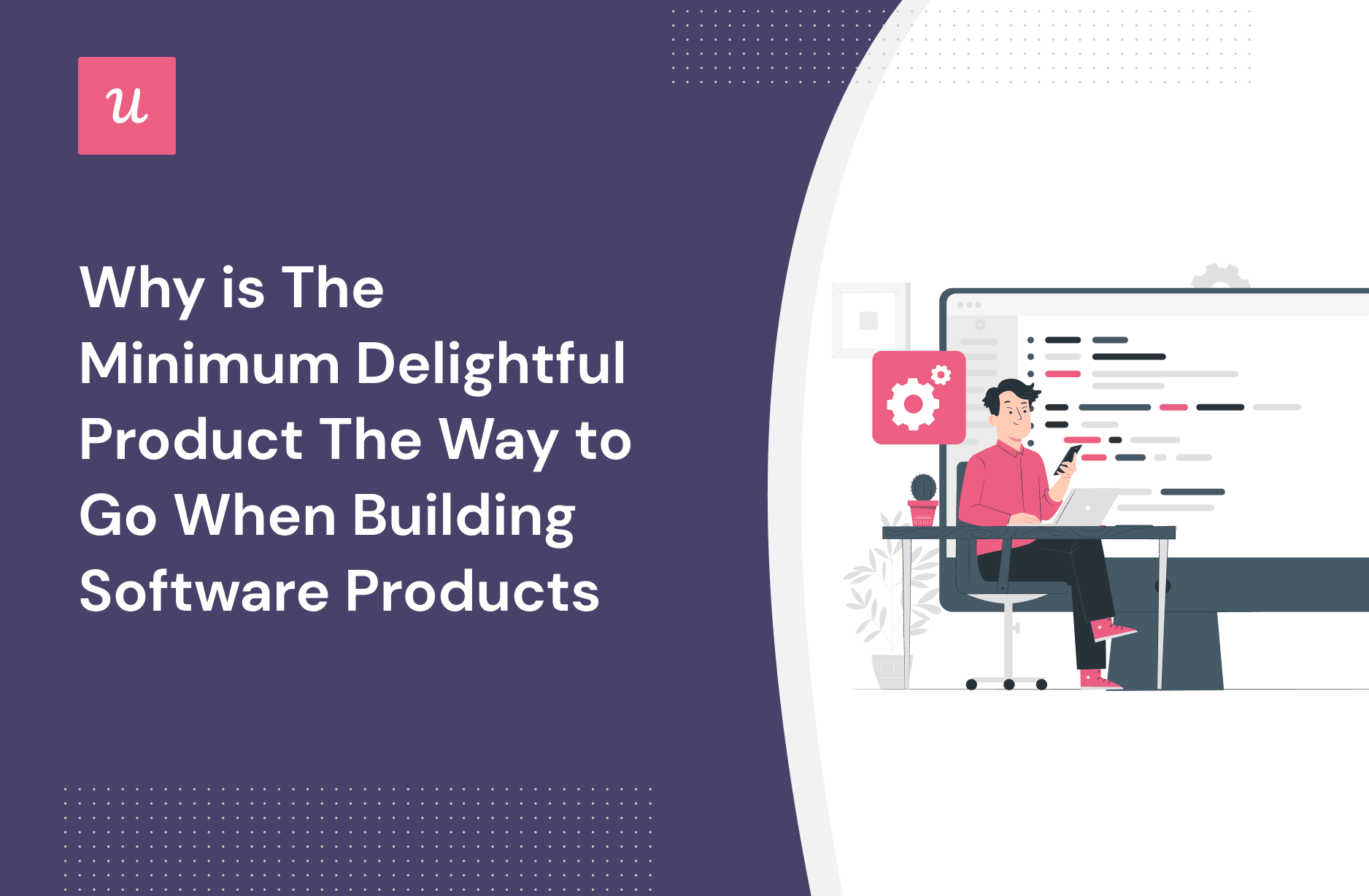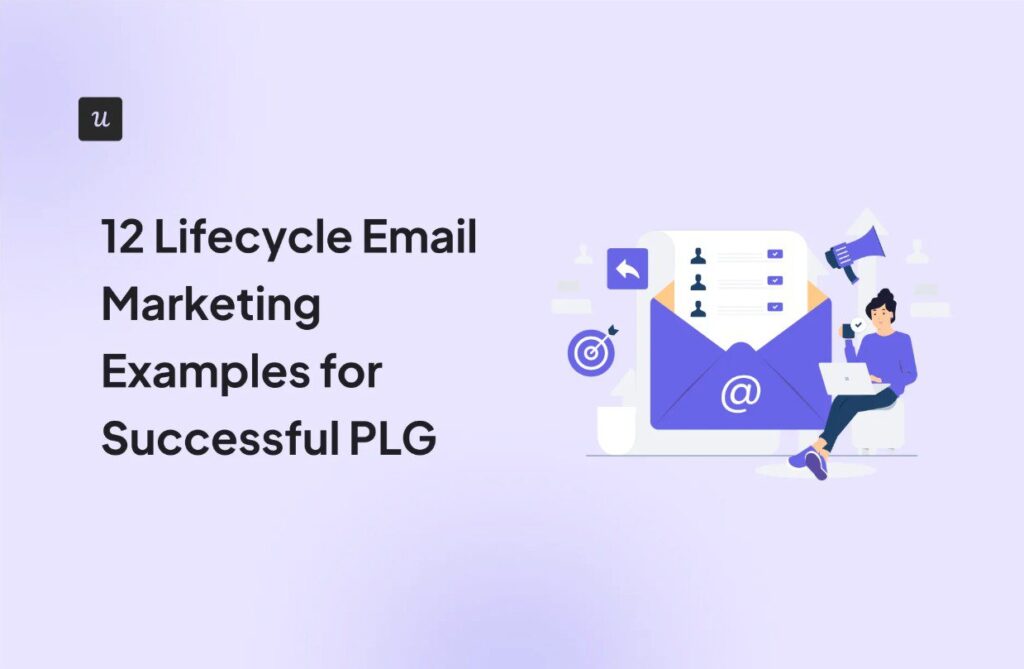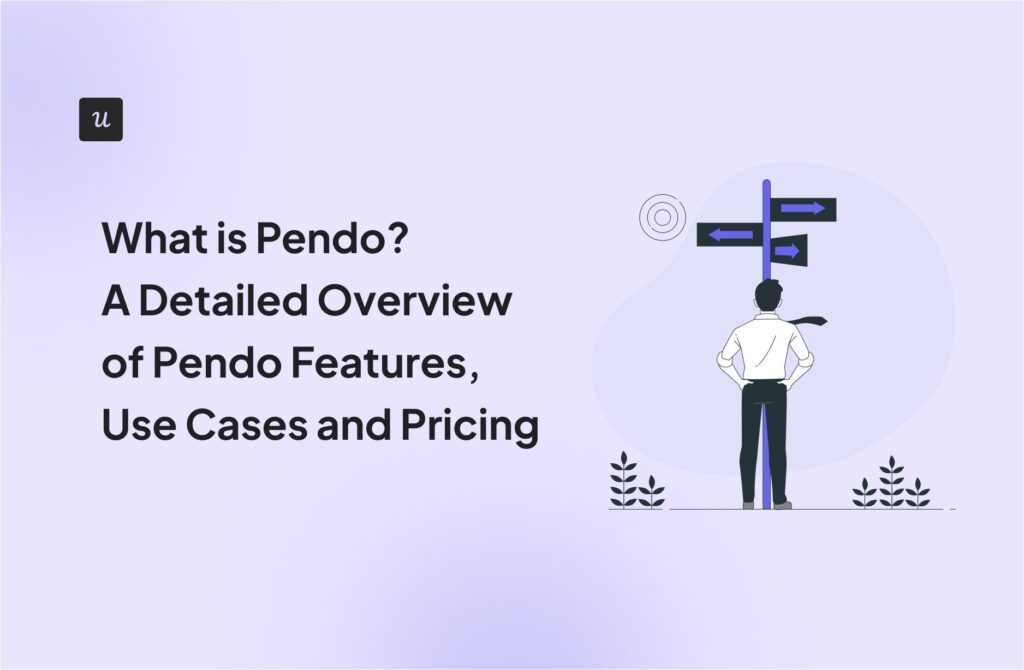
Why is the Minimum Delightful Product The Way To Go When Building Software Products
You’ll almost certainly have heard of a minimum viable product. But a minimum delightful product might be new to you and exactly what you need to focus on as a product manager.
Well, look no further.
In this article, we’re going to break down the concepts behind this exciting new concept and specifically focus on how you can implement key lessons in your own SaaS.
If you’re ready to get started, let’s get into it!
Get The Insights!
The fastest way to learn about Product Growth, Management & Trends.
Summary of minimum delightful product
- A minimum delightful product is a variation of the minimum viable product (MVP) (popularized by Eric Ries in his book, ‘The Lean Startup’). But rather than focusing on optimizing for speed, the set of features is optimized for customer delight.
- Let’s explore the difference in more detail. A minimum viable product is a lightweight version of a product consisting of the bare minimum to push value into production and into the hands of a subset of users (early adopters).
- A minimum delightful product (MDP) is a version of your product consisting of just enough to engage and delight your users.
- Both concepts are equally valuable and can serve an important role in your product development process. Use an MVP to figure out whether you’re heading in the right general direction before you spend too much time, effort, and energy building. Then, use an MDP to understand whether you’ve got the potential to delight and engage your customers.
- If you just meet minimum expectations, you’re just about fulfilling the bottom limit of the desires of your users. However, if you go too far the other way and try to blow your users away with value at every stage, you lose the ‘minimum’ aspect (and the ability to validate ideas quickly).
- Here’s another sort of ‘minimum’ to think about: the minimum lovable product. They’re much more similar to an MDP than an MVP: the point of an MVP is to ensure your product experience isn’t purely ‘functional’, but instead have something that causes that spark.
- Creating an effective MDP isn’t as easy as just bolting a load of extra ‘stuff’ onto your MVP and hoping that’ll work. You need to focus on both usability features and delightful features.
- So how do you create a minimum delightful product of your own? Start with comprehensive user research to thoroughly understand your customers’ needs. Then map out their pain points and figure out how to address them.
- Next, remember to keep your vision at the center of your product enhancements. It’ll help you add features they’ll love by staying true to that central idea.
- Another helpful tactic to drive delight is to lean into differentiation: what do you do differently from the competition? It might be more impressive features, but it could be broader than that.
- Remember to continuously collect, synthesize and importantly act on user feedback. That’ll help you make informed decisions about what you build next.
- Continue to test the strength of your product-market fit. Just because you’ve achieved it once, doesn’t mean the landscape can’t shift (and mean you need to adjust accordingly).
- Want to collect user feedback to build products that delight? Get a Userpilot demo and get started.
What is a minimum delightful product?
A minimum delightful product is a term first popularized by Adam Berry – a successful entrepreneur – on his blog, Startup Blender. It’s a different type of minimum product: rather than focusing on the minimum a product needs to serve its users (i.e. the core features, like an MVP), the line is pushed slightly further out.
Ask yourself: what’s the minimum set of features or functionality you need to include to make your users fall in love with your product?
The core concept is that users are much more likely to adopt, utilize and share products if they thoroughly enjoy using your tool… not just tolerate it.
Minimum delightful product vs minimum viable product?
To explore the differences between these two concepts, let’s start by defining them.
A minimum viable product is a lightweight version of a product consisting of the bare minimum to push value into production and into the hands of a subset of users (early adopters).
“An MVP is the version of a new product which allows a team to collect the maximum amount of validated learning about customers with the least effort.”– Eric Ries
A minimum delightful product is a version of your product consisting of just enough to engage and delight your users. It helps you to do slightly more than just validate features: it means you can start to engage your customers and build interest.
“Delightful products users fall in love with. They immediately become part of a user’s life or work. When a product is delightful it just makes sense. It works the way you’d expect and the experience is highly satisfying. Delightful products are adopted faster, get better word of mouth, and create higher satisfaction.”– Adam Berrey
As a rule of thumb, where MVPs are optimized for speed, MDPs are optimized to maximize user experience.
Should you stop focusing on minimum viable product (MVP)?
So, we’ve covered the differences. But should you stop building MVPs at the expense of building an MDP?
In a nutshell, the answer is no: both concepts are extremely valuable and serve an important role in your product development process.
- Use an MVP to figure out whether you’re heading in the right general direction before you spend too much time, effort, and energy building a feature potentially nobody needs.
- Use an MDP to understand whether you’ve got the potential to delight and engage your customers, generate interest and start building loyalty.
Ultimately, whichever you choose, remember that the idea is to stress test your business idea and start to validate product-market fit. Begin with that focus in mind and you’ll be on the path to SaaS success.
Expected features vs delightful features: Which one do you need?
How do you strike the right balance?
If you simply meet expectations, you’re just about reaching the bare minimum desires of your users. That’s certainly not enough to convince them to make an adoption decision.
However, if you go too far the other way and try to blow your users away with value at every stage, you lose the ‘minimum’ aspect (and the ability to validate quickly).
Let’s take an example: say your partner brings you a beautiful bunch of flowers for your 10-year wedding anniversary. You’re probably expecting it. A bunch of flowers on a random day will bring you instant delight (surprise is absolutely inherent to creating that feeling of delight). On the flip side, a bunch of flowers every day of the year would make them feel far less special.
The key takeaway? You need to strike the right balance to ensure your users are satisfied.

What about the minimum lovable product?
Here’s another sort of ‘minimum’ to think about: the minimum lovable product. They’re much more similar to an MDP than an MVP: the point of an MVP is to ensure your product experience isn’t purely ‘functional’.

Ultimately, building an MLP leaves you much more room to experiment with design options and enhance the UX of a given feature, rather than ruthlessly cutting scope to hit arbitrary deadlines.
Must have product features of a minimum delightful product (MDP)
Creating an effective MDP isn’t as easy as just bolting a load of extra ‘stuff’ onto your MVP and hoping that’ll work.
No, unfortunately, it’s a lot more labor intensive: you and your team will need a much deeper understanding of your users’ needs, so you can figure out what ties together as a cohesive first version of your product.
That means you need to know what’s going to make the difference from something that’s purely functional to something that’ll keep your users coming back for more.
So, what should your MDP focus on?
Product usability features
Start from a firm foundation: your product should be functional and stable. Usability is fundamentally important.
That means users should be able to navigate around and actually use your product in practice without getting stuck, blocked, or lost.
Product delight features
A delightful product is something that elicits that strength of reaction and brings an instant smile to your face.
There’s not one sure-fire way to trigger delight: it could be pleasing aesthetics, an effortless onboarding experience, the simplicity of accessing a key feature, or something unusual (i.e. the ‘vibrating’ icons when moving things around on an iPhone).
But remember, as we discussed earlier… delight and surprise go hand in hand.
How to build a minimum delightful product?
In this section of the blog, we’re going to explore how you can apply these ideas practically – and bring your ideas into reality. Let’s start building!
Do user research to understand your customer’s pain points
You can’t build a product that delights your users without understanding what they’re trying to achieve, their fundamental user needs, and their struggles in fulfilling them.
A combination of qualitative and quantitative research – focused on clear research aims – will help generate reams of user insight. From that, you can synthesize and prioritize a clear set of requirements.
That exercise will help you make effective decisions about what sort of features you need to deliver as part of your MVP and avoid product parity, and how to go above and beyond to trigger delight with an MVP.
Stick to your product vision and add features customers will love
One way to doom your SaaS is to try and be all things to all people. In this highly-specialized marketplace, an attempt to satisfy everyone will please nobody.
Be brutal in the pursuit of a clearly defined product vision, and use it as a way to help make decisions about what to include in your MDP.
If it doesn’t contribute to that vision, chances are it’s not part of your core value proposition (and therefore runs the risk of not being a feature that your customer loves).
Delight customers with product differentiation
Remember a minimum delightable product isn’t just functional: it goes the extra mile to deliver features that bring value to the forefront of your users’ experience.
One extremely effective way of getting there is by focusing on product differentiation.
Focus on what you’re doing differently from the competition.
Remember that it doesn’t just need to be about specific features. It could be much broader. Do you provide incredible customer service? Unbeatable support? Out-of-this-world onboarding?
For example, rather than cluttering the UI or forcing them through boring tours, build a minimum viable onboarding experience.
You can also create targeted mobile-first onboarding flows, customizing welcome screens, carousels, and slideouts to deliver personalized messaging.
Continuously collect and act on user feedback
Of course, a minimum delightful product is just the start for your early customers. You’ll want to iterate, expand and evolve over time to continuously bring delight and value to your users over the entire customer lifecycle.
So, what does that mean for you and your team?
You should constantly be looking to gather feedback and insights to build an understanding of user sentiment. That’ll help you prioritize future development efforts based on your underlying vision.
Regularly test product-market fit
Achieving product-market fit is not a one-off job you can tick off your to-do list and then forget about. Look at Blockbuster: from a market leader, to completely out of business.
Continuous evaluation of data gathered via product-market fit surveys will help you understand where you fit in a shifting landscape, particularly as you launch new features.

Over time, that’ll help you stay on the right path – and make sure you are still delivering a delightful product.
Conclusion
We’ve covered a lot of detail in this short – but hopefully in an information-dense and actionable article. You should now feel confident that you:
- Can clearly define and explain the difference between an MVP and an MDP
- Understand why an MDP is a valuable concept and how it can help
- Know the tactics and steps to follow when building an MDP
So what are you waiting for? If you wanted to get started with an MDP of your own, get a Userpilot Demo and see how you can craft a cohesive product experience today.





